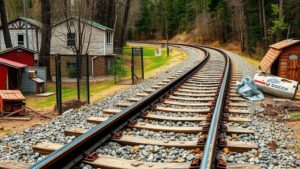Mining Historical Ropewalk Production Logs for Nautical Relic Leads
Mining Historical Ropewalk Production Logs for Nautical Relic Leads
The study of historical ropewalk production logs provides valuable insights into maritime history and artifact recovery. By investigating the methods of rope manufacturing and the materials used, researchers can uncover leads for locating nautical relics related to maritime trade, shipbuilding, and naval warfare. This paper examines the significance of historical ropewalks, the data contained within production logs, the practices used in the industry, and the implications for maritime archaeology.
Historical Context of Ropewalk Manufacturing
Ropewalks, established during the early modern period, were workshops dedicated to the production of rope, an essential material for sailing ships. Historical records indicate that the first documented ropewalk in America began in Boston in 1640. By the 18th century, cities with active shipbuilding industries, such as Portsmouth, New Hampshire, and Philadelphia, Pennsylvania, had established significant ropewalk facilities.
The production of rope was not only vital for ship rigging but also crucial for various other uses such as fishing nets, cargo handling, and securing goods. The types of rope produced varied: from thick cables for ships to finer twines for fishing and domestic applications.
Analyzing Production Logs
Ropewalk production logs, often maintained meticulously by facility managers, contain extensive data on the types of rope produced, quantities, materials used, labor employed, and seasonal variations in production output. e logs are critical for understanding production methods and economic conditions of the time, reflecting the demand for different types of rope based on maritime activities.
For example, the Philadelphia Ropewalks production logs from 1765 to 1780 indicate a steady increase in demand for larger ship cables, correlating with the growing number of merchant ships in the region. The logs detail:
- Types of materials sourced, such as hemp and manila.
- Production rates peaking during the summer months in preparation for the shipping season.
- Labor costs associated with both skilled and unskilled workers.
Linking Production Logs to Nautical Relics
By cross-referencing historical ropewalk production logs with shipbuilding records and maritime archeological sites, researchers can identify potential locations for underwater excavations and relic recovery. For example, the existence of a significant production capacity for specific rope types can suggest particular maritime activities, such as fishing fleets or naval engagements.
Plus, the geographical distribution of ropewalks and their output can lead researchers to shipwreck sites. An example is the identification of wrecks from the War of 1812, where the production log evidence points to specific rope types used in naval battles, thus guiding salvage operations.
Challenges in Data Interpretation
Interpreting historical production logs presents several challenges. The legibility of documents can vary, especially those recorded by hand, and the terminology used may differ across locations and times, potentially leading to misunderstandings. Plus, production logs can be incomplete or lost entirely, complicating the analysis.
To mitigate these issues, interdisciplinary approaches combining history, archaeology, and materials science have emerged. For example, collaboration between historians and maritime archaeologists can lead to improved interpretations of the material culture associated with rope production and use.
Conclusion and Implications for Future Research
The mining of historical ropewalk production logs proves invaluable in shedding light on nautical relic leads and understanding maritime operations. Comprehensive analysis and cross-referencing of these records with other historical data will enhance recovery efforts and enrich the narrative of maritime history.
Future research could further explore:
- Specific case studies regarding shipwrecks linked to ropewalk production.
- The impact of technological advancements on rope manufacturing methods throughout history.
- The correlation between specific marine industries and the types of rope produced.
Ultimately, ongoing exploration of these production logs will not only assist in the identification of nautical relics but also preserve the maritime heritage that informs our understanding of past human endeavors on the water.



